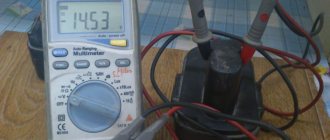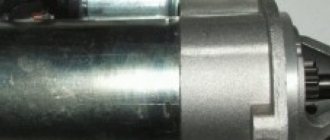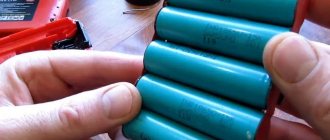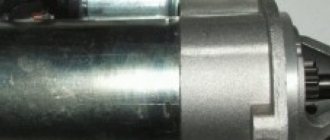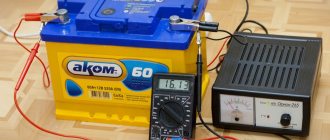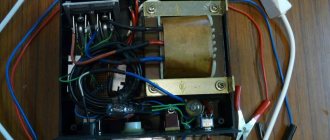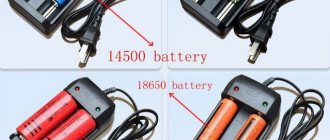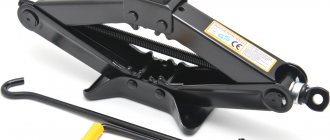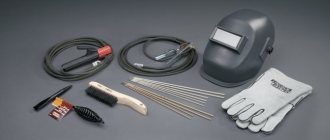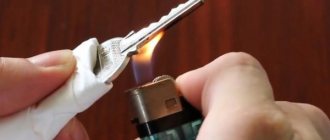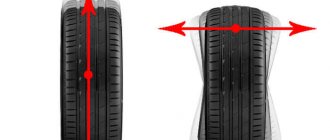One of the most popular and in-demand tools in the household is a screwdriver. With its help, you can not only screw and unscrew fasteners, but also drill and perform other types of work, replacing only the nozzles. Frequent use of the tool requires regular charging of the battery, and therefore entails failure of it or the charger. In the material we will pay attention to the question of how to repair a charger for screwdrivers.
Why is the screwdriver battery not charging?
If the screwdriver is equipped with a rechargeable battery, then a charger must be included with it. If at one point you discover that the tool’s battery is not charged after you put it on charge, then there may be several reasons for this:
- Battery malfunction, which happens quite often when the tool is not handled properly.
- Charging fault. This happens very often with Chinese instruments, which are much cheaper than branded products.
Despite the fact that there are two reasons for the battery not charging, the first thing you need to do is check the health of the battery. You can check its serviceability by connecting it to the terminals of a voltmeter or multimeter. If the device shows at least a similar value (12V, 16V, 24V), then the problem is most likely in the charger.
It is important to know! Most chargers are equipped with indicator lights (diodes) that indicate the charging process and its completion. If, after connecting the battery, these elements do not show the charging mode, or do not light up at all, then the problem is in the charger itself.
Typical malfunctions of the screwdriver charger
Typical charger malfunctions include:
- Fuse blown.
- Rectifier malfunction if the device reduces the voltage from 220V to 12V.
- Failure of the high-voltage transistor of the inverter.
The remaining components, as practice shows, work for a long time and without failure, therefore, if you suspect a faulty charger, you should check these three main components. You can repair the screwdriver charging yourself. To do this, you will need to disassemble it, which is possible if you have a regular square screwdriver in your arsenal.
Repairing a screwdriver charger
Repairing a screwdriver charger begins with the initial need to identify the possible cause of the malfunction. After all, quite often the reason for the battery not charging is oxidation of the contacts or their clogging while charging. First, carry out a visual inspection of the product, assessing its condition. If there is a burning smell, this indicates burnout of the internal elements.
Do-it-yourself charger repair is carried out by performing the following steps:
- First, remove the housing cover by unscrewing 4 or 6 fasteners.
- We remove the cover and see that the charger consists of two parts: a transformer and a board.
- We begin the repair by checking the voltage at the transformer output. To do this, the tester is set to the “Voltmeter” mode. In this case, you need to plug the plug into the socket.
- If the multimeter shows the corresponding value, then the transformer is working. If there is no voltage, then you need to ring the network cable. If damage to the network cable is excluded, then you need to make sure that the primary and secondary windings are not broken. Typically, imported transformers have a fuse installed in the primary casing. It is usually hidden under the shell, so you should find it and ring it. If a fuse blows, it should be replaced with a similar one. If the primary or secondary winding is damaged, then it makes no sense to repair the transformer, since it is easier to purchase a new device. If the cause of the malfunction is a fuse, then after replacing it, you should check it before assembling the product.
- If voltage is supplied to the board, then you should start looking for the faulty element. It is necessary to check the high voltage rectifier. Very often in this case one of the capacitors turns out to be faulty. This is usually the electrolytic capacitor on the board, which is the largest. It must be replaced with a similar one with the appropriate parameters.
- If the capacitors are working properly, then the cause of the malfunction is a breakdown of the transistor. It should also be re-soldered.
After repairing, the charger should be checked for serviceability and operation. Standard battery charging time ranges from 1 to 4 hours when the battery is completely discharged.
It is important to know! Do not store the screwdriver for a long time with a completely discharged battery. You should also not store the screwdriver for a long time without using it.
To summarize, it should be noted that to repair a screwdriver charger, you do not need to be a specialist. The design of this product is quite simple, but do not forget that this element runs on electricity, which is dangerous to life. When carrying out repair work, do not forget to follow safety precautions.
Until recently, the main assistant in the hands of a master was a drill, but today it has been replaced by a screwdriver. This portable power tool is used for screwing and unscrewing fasteners, drilling holes and even sanding surfaces. However, the instrument breaks down for various reasons, and how to repair it is described here. In the description, we will consider how to repair a charger for a screwdriver, and whether it is possible to restore the integrity of the electronic unit.
How to identify a faulty charger
Before you start repairing the screwdriver charging, you need to check whether the power supply is really the reason for the lack of battery charge. After all, much more often the tool’s battery fails first. How to check the battery for serviceability is described in detail in this material. The easiest way to make sure that the screwdriver charger requires repair is to plug in the power supply and look at the indicators. Typically, each charging unit has an indicator light that indicates whether the battery charge is restored (whether the unit is charging the battery). If the indicators do not light up, then the unit is most likely faulty and requires repair. However, there is no need to draw hasty conclusions here either. To make sure that the charging unit from the screwdriver is not working, you need to do the following:
- Pick up a tester or multimeter
- Plug the power supply into a power outlet
- Set the multimeter to DC voltage measurement mode. The amount of voltage depends on the tool itself. To find out the output voltage, you need to examine the description sticker. Typically the output voltage is in the range from 9 to 24 V
- The red probe of the multimeter needs to be touched to the positive contact of the charging unit, and the black probe to the negative (or minus)
- Pay attention to the multimeter screen and the values it shows
Depending on the multimeter readings, you can draw the following conclusions:
- If there are no readings, that is, the number “0” on the screen, the unit is not working and therefore requires repair or replacement
- If the multimeter readings correspond to the value indicated on the power supply, the device is working properly, and the reason for the multimeter’s inoperability is most likely hidden in the instrument’s battery
- If the readings on the device are lower than the values indicated on the power supply, that is, when the output voltage is 9V or 12V, the device shows 3V, 5V or 7V (or other values) - the electronic elements in the charging unit have failed, so minor repairs will be required
There is another scenario - the device shows values higher than the nominal value indicated on the charging unit. Such situations are rare, and if the unit produces a voltage higher than that indicated on the power supply, this can damage the battery or reduce its service life. In this case, you also need to resort to repairing the charger from a screwdriver. If checking with a multimeter confirms that the charging unit is faulty, then it’s time to start troubleshooting.
Benefits of cordless tools
Today there are many devices that successfully cope with installation work using fasteners: screwdrivers, drills, drilling machines, many of them have a charger for a screwdriver.
Small, lightweight, mobile and self-contained screwdrivers have the following advantages:
- The comfortable, easy-to-hold handle shape facilitates high-speed work.
- Economical. Many models come with useful options and attachments, such as universal bits and attachments that are easily replaced, giving you more flexibility on the job.
- Energy-saving design, saves energy and increases the charging period.
- Increased efficiency, the tool allows you to quickly and accurately tighten fasteners in hard-to-reach places.
- High versatility. Variable speed of rotation, forward and reverse stroke.
- Flexibility of use, three-mode range of work.
- Good repairability, availability of a sufficient number of spare parts on the market.
What can break in a charger from a screwdriver?
What breaks down in a screwdriver's charger is known to specialists who are faced with the problem of tool inoperability every day. It is irrational to buy a new charger for a screwdriver, so if the battery of a power tool does not gain a charge, then you need to start repairing by finding the cause of the breakdown.
The reasons for the inoperability of battery charging units are the following parts and mechanisms:
- Fuse - all electrical appliances that are not assembled “in the basement” have protective elements, and one of these is a fuse. It protects the charger board from overvoltages, stray currents, short circuits, etc. To do this, the circuit design uses a fuse designed for the appropriate current rating, the value of which depends on the battery voltage. Typically its rating is 5A, and it is located immediately after the transformer in front of the rectifier bridge. The fuse has a cylindrical design made of transparent glass with steel contacts on the sides. There is a “hair” inside, which is designed to pass current up to 5A (the current may vary on different models)
- Rectifier or diode bridge - if the fuse is working, and how to check it is described below, then we move on to considering the diode bridge. These are four diodes that are designed to rectify the current from the alternating current coming from the network to the direct current required to charge the battery. To repair the rectifier, you will need to unsolder the faulty diode or all diodes and replace them
- A capacitor is a large cylindrical barrel, which very often causes device failure. The capacitor swells, as a result of which the fuse fails, and often this also entails burnout of the diode bridge
- High-voltage inverter transistor, which very often fails on charging blocks of screwdrivers designed for 220V
Which element would not fail, but first you need to make sure that the failure lies in the power supply itself. After all, they often blame the power supply, although in fact it is high time to replace the battery. If you are going to repair the charging screwdriver, then you should start by checking the device for malfunctions. The instructions on how to check the unit itself are described above, so now we will find the faulty element, which is the reason for the charging failure.
How to find a breakdown in the charging unit of a screwdriver
Few people know what is needed in order to find a breakdown in the charging unit of a screwdriver, so we will consider this process in detail. You should start by disassembling the charger case, but this is done exclusively with the device disconnected from the network. Make sure that the plug of the device is not connected to the outlet, and only then begin to disassemble the housing structure.
To get to the inside of the screwdriver charger, which is being repaired, you must first unscrew 3-4 or 6 screws securing the cover. The number of screws depends on the model of the screwdriver and the power supply itself. As soon as the case is disassembled, the following picture will appear before your eyes, as shown in the photo below.
What to do with all this? You need to start repairing the charging screwdriver by identifying the faulty element or assembly. To get started, do the following:
- An inspection is being carried out. If there are traces of soot, then the breakdown has been found, and you can begin to fix it, but do not rush. After all, the presence of carbon deposits on one element could cause failure of other parts. To find them, you need to do the following, so read on
- We arm ourselves with a tester, and, having set the switch to the dialing mode, we touch the fuse terminals with the probes. What it looks like is shown in the photo above. If the tester beeps, it means the fuse is good and the problem is somewhere else. Let us remember our initial check of the device for serviceability - if the tester readings were positive (and not zero), then the fuse need not be checked, and the reason is different. If the tester readings are zero, then the fuse is checked first.
- The next thing to check is the capacitor. Its malfunction can be identified by its shape - if it is swollen, then the repair of the screwdriver charging can be completed by replacing the burnt out element. Before soldering, it is recommended to make sure that the element is really faulty. To help, we again take a multimeter, only now we set the switch to the resistance measurement mode, and touch the terminals of the device with the probes. Shows “0”, which means you need to replace the capacitor and “it’s in the bag”
- Often the failure of a capacitor entails a burnout of the diode bridge. All or some of the diodes may fail, but in any case, they are worth checking. The photo below shows what a capacitor and diodes look like. You can check the health of the diodes by setting the multimeter to DC voltage measurement mode. To do this, we touch the leads of the diodes one by one with the probes. In one direction, the diodes must pass voltage and display the corresponding value on the device. After this, you need to change the polarity and ring the outputs again. If they pass in the opposite direction, then the corresponding elements should be replaced. If none are missing, then they are intact and do not require replacement.
- Checking the inductor or resistor is also checked using continuity testing or resistance measurements. If the continuity signal does not beep, then the resistor is faulty and needs to be replaced. All other elements rarely fail (unless it is a lightning strike in the electrical network, after which the entire board burns out completely), so usually this is where the search for faulty elements ends
Found faulty elements need to be replaced, but how to repair the screwdriver charger is described in detail below.
Transistor device IRLML2230
Charging circuits with transistors of this type are found quite often. The Intreskol company uses them in 14 and 18 V versions. In this case, the microcircuits are used only of the three-channel type. The direct capacity of these transistors is 2 pF.
They tolerate current overloads from the network well. In this case, the conductivity indicator in the charges does not exceed 4 A. If we talk about other components, then the capacitors are installed of the pulse type. In this case, three of them will be required. If we talk about 14 V models, then they have thyristors for voltage stabilization.
Source
How to repair a screwdriver charger
When the power supply is disassembled and faulty elements are found, it will not be difficult to repair the charging of the screwdriver. To do this, you will need to arm yourself with a soldering iron, as well as flux and solder, and then get down to business.
In order to repair a charger for a screwdriver with your own hands, you will need new elements that need to be installed in place of the failed ones - these are a fuse, resistors, diodes and a capacitor. These elements cost a penny, and if you have old charging blocks or microcircuits at your disposal, you can remove them from there. When all the tools and elements are ready, you can begin the repair.
- First you need to unsolder or remove the fuse. Depending on the model of the power supply, the fuses in it can be plug-in or soldered. Even if this is a plug-in fuse, and you only managed to find one with legs, then the inserts need to be unsoldered from the board and a fuse element soldered to the contacts instead
- If the capacitor is swollen and does not work, then it must also be removed and replaced. When soldering, do not forget to look at which legs are located where. This is very important, otherwise the element will not work correctly, which will lead to repeated failure. The positive contact of the “plus” capacitor must be connected in a chain to the cathodes of the diodes. In order to understand what we are talking about, below is a diagram in which the area of interest is highlighted. When installing a new capacitor, you need to select it according to the parameters that the failed element has
- If the diode bridge fails, then you need to remove the diodes and solder them. It should also be taken into account that the diodes must be soldered in the correct position - the anode to the input of the high-voltage part, and the cathode to the low-voltage part. If you focus on the diagram presented above, then there will be no difficulties with soldering the elements
If a resistor, transistor or other elements are faulty, they must also be replaced. The biggest difficulty that can be encountered when repairing a charging screwdriver is the failure of the microcontroller. The thermistor, which is located in the design of the primary winding of the transformer, may also fail. Its purpose is to limit and reduce the inrush current. The thermistor helps charge the capacitors that are at the input of the circuit. How to repair the charging unit of a screwdriver if the thermistor has failed is described in detail in the video.
If this element fails, then it is easier to buy a new unit, since it is very difficult to find a similar element, and even if you succeed, you will need to use a special hair dryer for soldering.
After carrying out a simple repair of the screwdriver charger, you need to initially check its functionality, and only after that you can connect the battery. How to check the functionality of a repaired charging unit - plug it into a power outlet (just replace the cover first), and connect the multimeter probes to the terminals. The corresponding values mean that the device is working and can be used. Now your “Shurik” is saved, and can serve you for a very long time.
To summarize, it should be noted that it is impossible to keep the battery discharged for a long time, and if your charging unit from the screwdriver is broken, then you need to start repairing it immediately, otherwise putting off this process for a long time will not lead to anything good, but will only contribute to the need to buy a new one battery in addition to the charger. By the way, if you cannot repair the charger from a screwdriver or the device has been lost and it is impossible to find one on sale, then making a charger yourself will help solve the problem. However, this will require some knowledge of electrical engineering.
During intensive use of the screwdriver, there is a possibility of its breakdown. And one of the most vulnerable parts is the battery. Let's look at how to check the functionality of a screwdriver battery using different methods.
DIY screwdriver charger
The problem of making a charger yourself does not arise very often, due to the large number of options suitable for almost all models of screwdrivers. It’s just that sometimes situations arise when the charger is missing, or it suddenly fails, and there is no way to purchase a new one. In this case, you can try to make a charger yourself.
You should first stock up on all the necessary materials. You will need a non-working battery, a battery cup, a soldering iron, a hot-melt gun, a regular Phillips screwdriver, a drill and a sharp knife with replaceable blades. After this, you can begin making the charger. First of all, the charging cup is opened, after which all conductors are unsoldered from the terminals. Next, the internal electronics are removed. When performing this operation, the polarity of the terminals must be observed to avoid confusion and errors in the future.
The case of a non-working battery must be opened and the wires carefully unsoldered from the terminals. For further work you will need a connector and a top cover. Plus and minus on the terminals are marked with a pencil or marker. At the base of the charging cup, holes are marked through which the prepared lid and the terminals of the supply wires will be attached. The conductors are carefully passed through the holes, observing polarity, after which they are connected to the terminals and connectors by soldering.
Next, the body needs to be fastened with special hot-melt adhesive; the bottom cover is attached to the base of the glass using self-tapping screws. The resulting structure must be inserted into the battery and the charging process begins. A flashing indicator will indicate that the device is assembled correctly. Only a few chargers are equipped with so-called smart systems that significantly extend the battery life. An 18-volt screwdriver charger can solve this problem.
A voltage stabilization system and charging current limitation are added to the design of conventional charging. The result is a nickel-cadmium battery design with a capacity of 1200 mAh. Charging will be performed in a safe mode, with a maximum current of no higher than 120 mA, but it will take more time than usual.
A screwdriver is a tool that almost every home craftsman has. Like other electrical devices, it requires connection to the network or accumulates charge. The last option is the most common. To recharge the removable battery, you need a charger. Usually it is included in the set. However, like any other device, a screwdriver charger is not immune to damage. To restore the functionality of the tool, you will have to purchase a replacement or make it yourself.
There are many chargers available to suit specific brands and models of tools. All of them can be divided into main types.
Analog with built-in power supply
Analog ones with a built-in power supply are quite in demand. This is due to its low cost. Usually they do not belong to professional equipment, they quickly break down and “do not grab stars from the sky.” The minimum task that their manufacturers usually set is to obtain the constant voltage and current load required for operation.
The devices operate on the principle of a stabilizer. You can do it yourself using the diagram provided. To work you need to remember:
- The voltage at the output of the charging unit is greater than the battery rating.
- Any type of battery is suitable.
- You can use a regular circuit board.
- Such stabilizers use a compensation principle: unnecessary energy is removed and heat is removed. To dissipate it, you can take, for example, a copper radiator. Area - 20 cm².
- The input transformer (Tr1) changes the voltage from 220 to 20 V. Its power is determined by the current and voltage at the output.
- The current is rectified by a diode bridge (VD1).
- You can borrow the manufacturers' solution: an assembly of Schottky diodes.
- After rectification, the current is pulsating, which is harmful. For smoothing, an electrolytic capacitor (C1) is needed.
- KR142EN is used as a stabilizer. For 12 V its index is 8B.
- Control is based on a transistor (VT2) and resistors (tuning).
- Automatic shutdown after charging is usually not provided. You will have to determine the required time yourself. Alternatively, you can use a circuit that includes a diode (VD2) and a transistor (VT1). After charging, the LED (HL1) goes out. There are also more serious options with a switch and an electronic key that turn off automatically.
If the tool is a budget one, the circuit of its “native” charger may be simpler. It is not surprising that such products quickly fail. Sometimes a relatively new screwdriver is left without charging. Using the scheme discussed above, you can approach the issue responsibly and the device will most likely last longer than the purchased one. A suitable transformer and stabilizer are determined individually for a specific screwdriver.
Analog chargers with external power supply
Analog with an external unit, as the name suggests, consists of:
- from the network block;
- charger
The block is normal, includes:
- transformer;
- diode bridge;
- rectifier;
- capacitor filter.
Factory assemblies usually do not have a heat sink. Its role can be played by a high-power resistor. One of the typical causes of breakdowns is due to thermal conditions.
To correct the situation, you first need to find out whether the power source is working. If it functions, it is supplemented with a control circuit; if not, another one is sought. It is quite suitable, for example, from a laptop. It has 18 V output, which is quite enough. The remaining parts are usually not difficult to find. They cost very little and can be borrowed from other equipment.
The control unit diagram is shown below. The transistor KT817 is used, for amplification - KT818. Need a radiator. Approximate area: 30−40 cm². Up to 10 W will be dissipated here
Many Chinese manufacturers are trying to save on literally every little thing. This should be avoided if you need more or less decent quality. The homemade circuit has a 1 kOhm trimmer. It is needed to accurately set the current. At the output there is a 4.7 Ohm resistor. It dissipates heat. The LED will notify you when charging is complete
The resulting control board is about the size of a matchbox. It will fit quite well in the factory box. There is no need to take the radiator outside for the transistor. Enough air movement inside the housing
General recommendations before checking the battery
Immediately before checking the battery, it is necessary to clearly determine what type of battery it is. Depending on this type, the approach may be different. For example, the most common nickel-cadmium batteries are highly sensitive to operating conditions. Infrequent or irregular full recharges significantly reduce the battery capacity and the battery does not use its full resource. We will consider battery types in more detail below.
It is also recommended to fully charge the battery before testing. This will allow you to make more accurate conclusions about the performance of the device. It has been proven that the most accurate readings are taken under load. And a full charge represents a very suitable type of load.
Before testing, it is necessary to minimize the influence of the “memory effect” on the device. Since this effect appears in batteries in case of improper use, in order to eliminate it, it is necessary to use the battery several times according to all the rules.
It is enough to carry out charge/discharge cycles 3 times for the effect to be significantly reduced. For accelerated discharge, it is best to use an incandescent lamp, which, together with a multimeter, will need to be connected to the battery.
If everything is done correctly, then after several full cycles the battery will be able to restore its capacity and can again be used in a screwdriver. If the operation did not help, then the problem was elsewhere.
Nickel-cadmium battery
The most common type of battery. They charge quite quickly and have a good volume. They are durable and resistant to external influences. The average number of charge/discharge cycles can reach 3500. When using rapid chargers, the battery does not wear out faster and can last a long time. Separately, it is worth noting the low cost of such batteries and the ability to operate at temperatures below zero.
But there are also disadvantages, the main one of which is the so-called “memory effect”. Batteries are quite toxic if they malfunction and have a high self-discharge rate. Due to toxicity, manufacturers are now trying to rapidly reduce the percentage of such devices.
To extend the life of such a battery, it is recommended to completely discharge it before recharging.
Li-ion battery
A much more expensive analogue, which however has a number of undeniable advantages. Such batteries are used in advanced models of screwdrivers from well-known brands.
Such batteries have a large capacity and a much lower percentage of charge loss due to self-discharge. However, it is strictly not recommended to overheat such batteries and leave them completely discharged for a long time. This can lead to crystal degradation and battery failure. If it overheats, there is a risk of such a device exploding.
Like the first type, the lithium-ion battery is capable of functioning in the cold.
How to check
Battery
To check the screwdriver’s power supply for functionality, you simply need to take the current and voltage readings at the time of charging. Moreover, it is necessary to repeat the procedure several times to obtain the most accurate values.
Stages of voltage increase U:
- after 30 minutes of charging – 13 V;
- after 60 minutes of charging – 13.5 V;
- after 2 hours – 14 V;
- at the end of charging - 17 V.
Such observations indicate that the battery is fully operational and functional. In most cases, no further analysis will be required.
At the same time, a working battery will also have a steady increase in current within an hour after charging starts. If after an hour the indicator reaches 1 A, this indicates that the device is working properly.
There is also a method for accelerated battery testing, which consists of measuring the voltage at idle (without load). This voltage must reach the required value, which is directly related to the operating voltage of the battery cells (cans). If the indicator is lower, then there is a high probability of failure of one or more elements.
A separate type of testing the battery capacity with a multimeter from a screwdriver can be considered testing under load. This uses additional equipment that needs recharging. Incandescent lamps are ideal for this. The power of such a lamp must match the power of the battery. Otherwise, the test results may not be accurate enough. In most cases, power is equal to half the current the battery is delivering multiplied by the voltage. For standard screwdriver batteries, 12 V lamps are used for testing.
The battery is connected to the load through a multimeter, which is then used to take readings. After a few minutes you need to measure the voltage. It should be above 12.4 V. If this indicator has not been achieved, then there is clearly some kind of malfunction. Additionally, it is recommended to pay attention to the brightness of the light bulb. It should be fairly stable.
Charger
The malfunction may lie not only in the battery, but also in the charger itself. Therefore, you first need to check the charger for the screwdriver with a multimeter.
It switches on the DC current measurement mode and connects it to the charger using probes. The current value on the meter should be as close as possible to what is indicated on the housing. If this is not the case, then it is better to replace the device with a new one.
Battery bank voltage
After the first stage of testing, it will become clear whether the device is working or not. If testing indicates a discrepancy between the parameters, then it is logical to proceed with repairs, accompanied by the replacement of faulty cans.
You need to open the battery case and identify the fault. For this, they also use a multimeter, which is connected to each element separately. The voltage of each bank must be at least 1.2 V. All discrepancies indicate a breakdown of the element. Faulty banks must be removed from the common circuit and replaced with new ones.
If such a check does not reveal a breakdown, then you need to resort to load testing again. And here the level of resistance, which is directly related to voltage and current, is of fundamental importance. Each element is tested separately and resistances are also calculated. In the event of a malfunction, this indicator will clearly deviate from the norm and will quickly identify the broken element.
Screwdriver without battery
One should not rule out the possibility of damage to the screwdriver itself. Using a known-good battery or connecting the equipment directly to the network will help identify this fact. The second approach will also be an excellent option in case of urgent need to use the tool. Of course, mobility will be lost, but the functionality will still be usable.
The screwdriver can be used with an external power supply plugged into an outlet. Then you just need to choose a rectifier with the necessary parameters. Movement will be limited only by the length of the low voltage cable connected directly to the instrument.
You can also create your own prototype of a regular corded screwdriver. Then the power supply will be placed in the battery case and will allow you to use the tool quite conveniently. In this case, the main question will be to select the required small-sized power supply with suitable characteristics. The process can be complicated by the need to find a powerful but compact transformer.
It is advisable to check the screwdriver battery regularly to prevent various breakdowns at the most inopportune times. Of course, this only applies to preliminary testing, without disassembling the case. Batteries are relatively short-lived components that must be replaced periodically. But proper operation in compliance with charging standards will help keep the devices operational for as long as possible.
Video text
A simple way to remake the Makita DC1414T charger - part 2 of the video. In the first part, repackaging the Makita 6280D screwdriver battery with Li-Ion. Zener diodes for stabilization voltage 15 V: KS515A, D815E, 1N4744A, BZG04-15, Please view!
Charge controller 2 pcs. lot 3S/4S 12.6 V 16.8 V 15A BMS https://got.by/1dk67a
Set of zener diodes 140 pcs. from 3.3V to 30V 10 pcs. https://got.by/3juapx
4 things. lot high-current batteries INR18650-25R #18650, capacity 2500 mAh 20A https://got.by/3fewzz
6 pcs. lot, high-current batteries INR18650-25R 18650 2500 mAh 20A https://got.by/3e0k4u
Mini IR thermometer DT8220 LCD display, -50℃ to 220℃, Accuracy: ±2% https://got.by/356jo0
Digital multimeter RICHMETERS RM109 True-RMS https://got.by/2av4vl
Current clamp mini UNI-T UT210e True RMS https://got.by/2av4tu
VariCore V40 charger 18650 https://got.by/3jtxrg
Charger Liitokala lii500 3.7 V/1.2 V AA/AAA 18650/26650/16340/14500/10440/18500 https://got.by/3jtw9e
Opus BT-C3100 V2.2 charger with testing: capacity, internal resistance https://got.by/3h9a0i
Battery level indicators https://got.by/345itj
Charger for Li-Ion batteries 4S 16.8V 2.5A https://got.by/1kv6re
Charger for Li-Ion batteries 5S 21V 1.2A https://got.by/1s4xxs
Electronic load Atorch 200V 20A 150W, battery capacity tester 12V, 24V, 48V https://got.by/2lau96
Wires in silicone insulation - black 5 m, red 5 m https://got.by/2lau3j
Precision screwdriver set 53in1 JAKEMY JM-8127 https://got.by/3fewxn
Soldering station KIT set HAKKO T12 https://got.by/276grr Tips for soldering irons Hakko T12 - BC2 K BL B2 https://got.by/276f6e
Portable soldering iron Mini TS80 https://got.by/3a7k82
Heat-resistant polyamide adhesive tape 20 mm x 30 m https://got.by/1kw8hz
Desoldering pump, solder removal https://got.by/3ff089
Solder 60x40%, 100 g, diameter: 0.5/0.6/0.8/1/1.2/1.5/2.0 mm, flux 2.0% https://got.by/3fewc9
Solder 60x40%, flux 2%, weight 100 g, melting point 190°C https://got.by/3a7kvl
Braid for desoldering, length 1.5 m, width 1.5 mm, 2 mm, 3.5 mm https://got.by/3aws5z
3rd hand magnifying glass with backlight https://got.by/1c8tq2
Solder paste XG-Z40 Sn63/Pb37 25-45 um https://got.by/252ou1
Soldering flux NC-559-ASM-UV + Needles https://got.by/252p97
Global version of the fitness bracelet Xiaomi Mi Band 3 https://got.by/3g9my1
Sound in video BOYA BY-M1 Lavalier condenser microphone https://got.by/0oxwi.
Test https://youtu.be/2iwywTj9slQ
Thermal insulating mat for soldering up to 500°C https://got.by/3ff2yn
Studio lighting:
Spotlight 12 V
, it contains 10 LED strips. 50 cm DC12V 36 super bright LED SMD7020 5 W https://got.by/285x7g
LED strip 5 m 300 LED 12V SMD5730 https://got.by/2av4az
If the product link is not working, please let me know in the comments.
Source: www.youtube.com
